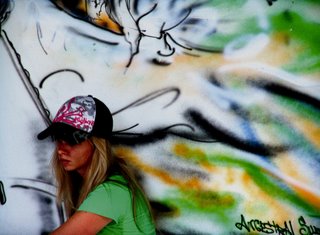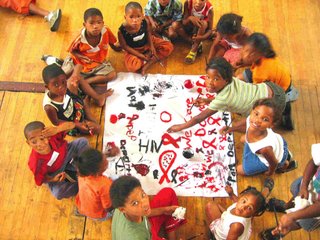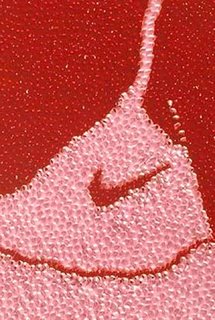

Medellin, hometown of Pablo Escobar is a place of violence, beauty and intrigue!
Driving from the airport, a good 40 minutes away, I was swept away by the lush tropical vegetation of being close to the equator. My taxi driver came to a halt after 15 minutes of driving and got out of the car, mumbled a few words in Spanish and disappeared under the bonnet…needless to say, the fear of being kidnapped or attacked by the Communistic Gorillas or Para-Militars was very real and I wished for a miracle!. We started descending into the Valley of Medellin or “the Boiling Pot” which locals call it. Medellin is surrounded by mountains and the geography of the State of Antioquia is extremely mountainous which makes travelling very difficult and tedious! Two million people and 220 neighbourhoods make up the urban area of Medellin. Due to the domestic wars which followed the War of Independence, refugees were forced to settle in the surrounding mountains of Medellin.
On my two month residency, funded by Unesco-Aschberg with the Centro Colombo Americano, I did workshops on the urban element of visual art: graffiti. The two local artists I would be conducting the workshops with were, Juan Fernando Velez and Juan Arturo Piedrahita. We could not classify our intervention as graffiti as it was not illegal. A wall was provided and the workshops were funded.
The workshops were called “Grafismos” and were based on the concept of combining plastic arts with graffiti. We did workshops with fine art students from the Antioquia University and design students from the University of Pontificia Bolivariana. International and National Institutions funded this project such as the Comfandi in Cali, Centro Colombo Americano in Manisales, Medellin and the minister of Culture, UNESCO-Paris. The director of the Botanical Garden of Medellin welcomed this project and assigned a 300metre wall for us to work on the wall of the botanical garden was erected in 1915 and would be broken down this year, 2005. The subject matter of graffiti images ranged from conservational awareness, urban messages, subversive symbols and popular icons. We also included other creative elements associated with graffiti at the opening of the wall with an electro-tango concert featuring the popular Argentinean band bajofondo . The one question which was frequently asked in all the workshops was: “if graffiti is an illegal art form, why are we doing graffiti on legal walls? Is this truly graffiti?”
Juan Alberto Gaviria, the Art Director of the Paul Bardwell Gallery of the Centro Colombo Americano reacts to this statement and generally on the grafismos workshops:“Graffiti is Public Art. Graffiti in a public space has a connotation of subversion and prohibition against the law. Formally, this proposal intended to evade the process of academic execution. However, the result of this phenomenon of graffiti was created by the interpretation of students from the Universities of Pontificia Bolivariana and Antioquia who where anxious to familiarise themselves with the technique labelled ‘underground’. The results of these workshops with the students of the mentioned universities are exhibited in several institutions as Comfandi, Cali, and the Centro Colombo Americano of Manizales and at the exterior walls of the Botanical Garden in Medellin. Why incorporate graffiti with academics as it has a principle of violation of the law in which “action” is an essential constituent of risk undertaken by the grafitero at night, as well as remaining anonymous? The ultimate plan was to possess characteristics and essential elements which are beneficial to the results of Graffiti. The ‘grafitero’ aims to make an effective language in simple execution of style in the streets which is coherent with the digital generation and the alteration of thought processes in modern society.”
Walking in the streets of Medellin and Cali, the visual language of graffiti is directed strongly at social, political and urban injustices aimed at the ongoing Civil War in Colombia. Cali, specifically, as the taxi driver commented, is like Medellin in the 80’s.In the 1980’s, Colombia agreed to a treaty authorising the extradition to the United States of narcotics traffickers accused of crimes in the country. This sparked widespread violence within Colombia and the drug cartels demonstrated their opposition with acts of brutal violence, assassinations and kidnappings of prominent judicial and political leaders who supported sending suspects off to the U.S.
We also did projects with the youth from the communas, which is the same as the townships in South Africa. Medellin is a city surrounded by poor refugees forced to flee their homelands because of civil war. Colombia is governed by communistic groups such as the Para-militars and Gorillas. In these neighborhoods, violence is part of life and the youth don’t know any better! Graffiti would take their minds off the days struggle! We worked in two neighborhoods called Altos de la Torro and Pacifico. We had to be invited to these hoods by the head of each community and the youth painted the main stairway of each. Stencil work and painting were encouraged and small children were hungry to participate. Specific symbols associated with social issues of the community were painted such as need for water and peace in the neighborhoods.





 I am a South African contemporary artist who works in urban styles and deals particularly with social commentary affecting the vulnerable sectors of society.Please look at my website<9href=http://www.orda.co.za where you can see more of my portfolio work
I am a South African contemporary artist who works in urban styles and deals particularly with social commentary affecting the vulnerable sectors of society.Please look at my website<9href=http://www.orda.co.za where you can see more of my portfolio work
